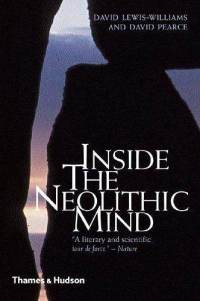Inside the Neolithic Mind

Cover of the first edition
|
|
| Author | David Lewis-Williams and David Pearce |
|---|---|
| Country | United Kingdom |
| Language | English |
| Subject |
Archaeology Religious studies |
| Publisher | Thames and Hudson |
|
Publication date
|
2005 |
| Media type | Print (Hardcover and paperback) |
| Pages | 320 |
| ISBN | |
| 930.14 | |
Inside the Neolithic Mind: Consciousness, Cosmos and the Realm of the Gods is a cognitive archaeological study of Neolithic religious beliefs in Europe co-written by the archaeologists David Lewis-Williams and David Pearce, both of the University of the Witwatersrand in Johannesburg, South Africa. It was first published by Thames and Hudson in 2005. Following on from Lewis-Williams' earlier work, The Mind in the Cave (2002), the book discusses the role of human cognition in the development of religion and Neolithic art.
The premise of Inside the Neolithic Mind is that irrespective of cultural differences, all humans share in the ability to enter into altered states of consciousness, in which they experience entoptic phenomenon, which the authors discern as a three-stage process leading to visionary experiences. Arguing that such altered experiences have provided the background to religious beliefs and some artistic creativity throughout human history, they focus their attention on the Neolithic, or "New Stone Age" period, when across Europe, communities abandoned their nomadic hunter-gatherer lifestyles and settled to become sedentary agriculturalists.
Adopting case studies from the opposite ends of Neolithic Europe, Lewis-Williams and Pearce discuss the archaeological evidence from both the Near East – including such sites as Nevalı Çori, Göbekli Tepe and Çatalhöyük – and Atlantic Europe, including the sites of Newgrange, Knowth and Bryn Celli Ddu. The authors argue that these monuments illustrate the influence of altered states of consciousness in constructing cosmological views of a tiered universe, in doing so drawing ethnographic parallels with shamanistic cultures in Siberia and Amazonia.
...
Wikipedia
